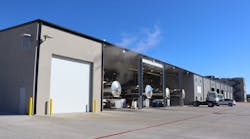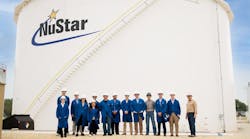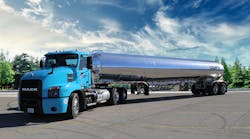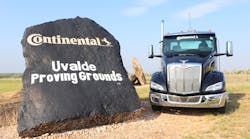DESPITE significant setbacks in the oilfield sector, the tank truck industry should see a 3% growth rate in freight levels over the next two years.
This was the assessment of Lawrence J Gross, FTR senior consultant and partner. He delivered the economic update during the National Tank Truck Carriers’ 38th Annual Conference April 24-26 in San Diego, California.
“The tank truck industry had a very good run from 2012 to 2015, and the oilfield was a big part of that,” Gross said. “After falling more than 6.5% in 2015, tank truck loadings have begun to improve, and we should see a 3% rise in 2016 and 2017. However, it looks like tank truck loadings could be flatter in the two years after that.
“The tank truck industry challenges include a continued decline in oilfield fracking activity, which includes transport of chemicals and water. The strong dollar is impeding US chemical export activity; and we are seeing a slow down in industrial and manufacturing activity.”
Broader economy
Looking at the broader economic picture, Gross said the short-term economic forecast shows mixed signals. Downside risk is growing, but the near-term forecast appears stable. On the world stage, China may pose the biggest question mark.
“The current US economic recovery is one of the longest on record, but improvement has been more gradual than other recoveries,” he said. “The recovery should continue for at least awhile longer, but it is important to note that recoveries don’t die peacefully in their sleep.
“It’s hard to say at this point what will trigger the next downturn. The industrial sector has faltered, but services have picked up the slack, at least for now. Exterior risks have moderated but remain in place.
“We see gross domestic product (GDP) growing by roughly 1.8% this year. Housing starts continue to climb slowly from the depths. Retail sales had been rising, but recently began leveling out. Automotive sales are topping out. Construction could see some growth with longer-term highway funding now in place. Fuel prices will rise over the next year, and we could see $60 to $70 a barrel for oil.”
Modest growth
What does this mean for transportation? For his analysis, Gross looked at rail, pipeline, and barge activity, as well as trucking. By mode on a ton/miles basis, trucking handled 46% of the total freight in 2015, rail claimed 25%, pipelines got 20%, and shipments over water accounted for 9%.
He said overall freight demand will increase only modestly over the next several months. That spells challenges for the railroads in particular. The railroads are seeing roughly a 15% year/year decline in volume.
Gross said railcar loadings look a little better when coal shipments are excluded, but the picture still doesn’t look great. He added that he believes that crude-by-rail activity reached its all-time peak in 2015. More crude oil is moving by pipeline.
On the trucking side, modest freight growth (between 2% and 3%) is expected through 2016 and into 2017, and 2016 truck loadings could exceed the 2006 peak. To handle the freight growth, truck fleets are squeezing more productivity out of their existing equipment.
Capacity issues
Active truck utilization was around 95% at the beginning of this year, and it is likely to reach 97.5% by the end of the year. “Fleets are running at such high levels of capacity right now that there is little room left for a surge in demand,” Gross says.
Regulations will negatively impact trucking capacity going into 2017 and 2018. New regulations—including the electronic driver log mandate, proposed speed limiter rule, drug and alcohol cleaning house, safety fitness determination, and safe food transportation—will generate a need for more truck drivers.
“The demand for new drivers is manageable right now, but the trucking industry will begin to feel the shortage by the end of this year,” Gross said. “By 2018, the regulatory drag will create a need for 120,000 new driver hires every quarter.”
New regulations—such as the speed limiter requirement—also will bring a need for more trucks. Gross pointed out that the industry will need 67,000 more trucks for every one mile per hour drop in speed to handle the same amount of freight. Currently, 2.9 million heavy-duty trucks are on the road today moving freight across the United States. ♦











